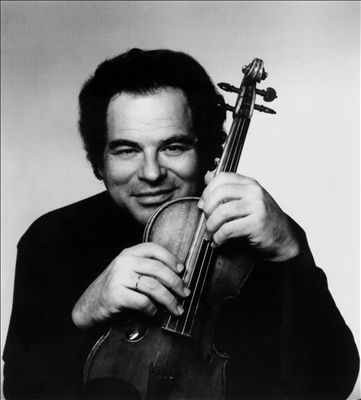This musical season has been the year of ultimates. Concert halls and performance centers have hosted the greatest names of their genre: From Murray Perihia, the legendary piano virtuoso, to Jose Carreras, one of the most renown names of the opera world. And, as the musical season draws to an end, I can easily say one the most attention-grabbing, excitement-stirring highlights of the year was the performance of Itzhak Perlman, the King of the Violin, last month.
Istanbul Congress Center was the venue, Yapi Kredi was the main sponsor, and tickets – costing as high as 600 TL for the front seats – were sold out from months before.
For any classical music fan, the name is self-explanatory – and the cause of ecstatic enthusiasm. Itzhak Perlman is THE name among violin players and regarded as one of the best players of our time. He holds five Grammy Awards, and honorary doctorates from Harvard, Yale, and many other institutions of higher learning. He has been awarded several medals of excellence by Presidents of the USA. He is a veteran of decades, and a master of notes and sounds executable only by the wizardry of his phenomenal genius alone. Having the chance to witness him perform live on stage is to have taken part in the history of classical music. It’s the classical equivalent of having witnessed Michael Jackson perform, Fred Astaire dance, or Santana play the guitar live on stage. Yes, he is all that.

Even if you are not into classical music at all, you will have heard him play, playing notes of beautiful sorrow in the “Main Theme” of the Schindler’s List soundtrack.
Perlman’s companion on stage was Rohan de Silva on the piano, an accomplished artist of international recognition and an academician and musical mentor at the renown Juilliard School in NYC. His talent has taken him before the cameras on CNN, on air on German radio, and to performances for the British Royal Family at the White House. He is a frequent partner of Itzhak Perlman on the stage, and befittingly holds an award of “Best Accompanist” from as far back as the 1990 Ninth International Tchaikovsky Competition.
Perlman and de Silva played a program that featured Beethoven, Strauss, Debussy, and a generous number of encores from various artists. Perlman played each perfect note without a strain of effort, it all seemed to come to him as natural as drawing a breath. Notes came out in the most natural, smooth, flowing way possible in the The Beethoven Sonata no. 8 in G Major for violin and Piano (Op. 30 , no 3). The tempo di minuetto, ma molto moderate e grazioso movement was just that, “moderate.” Neither too much, nor too little. Neither too loud nor too soft. In this case, “moderate” became synonymous with “just right.” De Silva gave us a beautiful, tranquil background as the violin told a story “moderate” in volume and meter, but intensely graceful and moving in sound and feeling.
In Richard Strauss’ Sonata E-Flat Major for Violin and Piano (op. 18), Perlman hit high notes and positions that should have normally squeaked and creaked…. But with Perlman and his 1714-Stradivarius, even those notes gushed out in lush, gentle, and lively flows. The piano provided largo, soft, gentle accompaniment to an andante (slow) but intense violin. And sprinkles of allegro (fast) made an intricate composition. The Richard Strauss of 20th century Germany is not related to the famous waltz’y family of 18th and 19th century Austria. However, his composition yielded no less fascination or applause as we entered the interval.
The only declared piece in the second interval was Debussy’s Sonata in G minor for Violin and Piano (L. 140). It lasted a brief fifteen minutes but it did all it promised in the name of its movements: allegro vivo, fastasque et leger, tres animé (fast and lively, fantasy-like and light, very vibrant). It rejuvenated our souls, drifted our souls to fantasy-lands, and enlivened us with the magical sounds of Perlman and the timbre of his Stradivarius.
The second half was deliberately kept short – to allow room for all the encores. Five of them, played in sequence, with only perhaps a minute of applause allowed between each. Perlman already knew that the audience would be yearning for more, and he did not keep us waiting. The highlight of the encores were the Itzhak Perlman trademark: the John William composition of the Schindler’s List musical theme. It was sorrow in the most beautiful way, a tear drop gracing down a face in the most delicate of ways. Perlman himself seemed to be touched the innermost by this piece, as he conveyed the vibe and emotion of the piece in his gestures and mimics. The final encore showcased intensities of prodigy almost unfathomable and presented the Perlman virtuosity that I had been waiting for. In the Manuel de Falla transcription of Kreisler’s Danse Espagnole, Perlman was playing notes on all four strings at once, executing multiple pizzicatos (plucks) on several strings at the same time, and doing all this at the speed of lightning, effortlessly, and with utmost precision! Perlman could not have been a mere human being – he was the wizard, the ultimate master of the string. Wow…
<em><a href=”https://yabangee.com/author/melis-kanik/” target=”_blank”>Melis Kanık</a> is a contributor to Yabangee</em>










